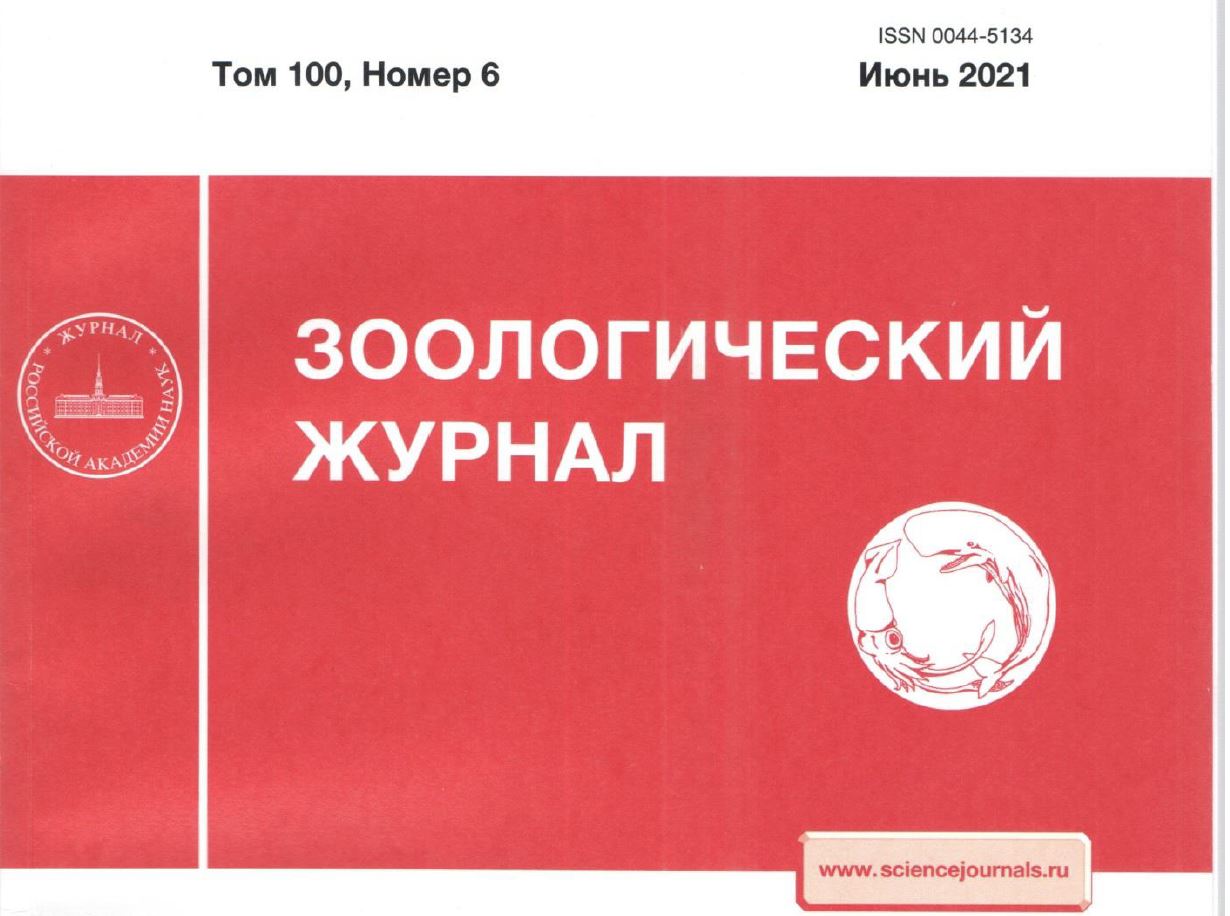Зоопланктон Цимлянского водохранилища и канала Волга—Дон
Зоопланктон Цимлянского водохранилища и канала Волга—Дон
Зоологический журнал. 2021. Т. 100. №6. С. 603—617.
УДК:574.587(275.2):591, ББК:, ISBN:ISSN: 0044-5134
В августе—сентябре 2018 г. изучен зоопланктон Цимлянского водохранилища и водоемов Волго-Донского судоходного канала. Для Цимлянского водохранилища выявлено 15 видов, которые не были отмечены в ранее опубликованных работах. Впервые приведен список (48 видов) зоопланктона Волго-Донского канала. Установлено, что 60% численности и 70% биомассы зоопланктона Цимлянского водохранилища формируют Copepoda. Наиболее многочисленны понто-каспийская Heterocope caspia и вселенцы Calanipeda aquaedulcis, Thermocyclops taihokuensis и Acanthocyclops americanus. На основе анализа публикаций 1952—2018 гг. показано, что во второй половине 1970-х годов произошла замена большей части изначальной донской группировки доминантов зоопланктона солоноватоводными видами. К 2018 г. массовые виды Copepoda сменились полностью, среди Cladocera и Rotifera сохранились 4—6 видов, обычных в р. Дон до зарегулирования. Выявлено увеличение более чем вдвое (до 2,1±0,5 г/м³) биомассы сообщества в 2015—2018 гг. по сравнению с 40-летним периодом до 2013 г. Показано, что биомасса зоопланктона в канале Волга—Дон (0,9±0,4 г/м³) в 2 раза ниже, чем в Цимлянском водохранилище. Численность зоопланктона водоемов канала определяют Rotifera и Crustacea (по 50%), а биомассу — в основном Cladocera (49%). Наиболее многочисленны обычные для донского планктона виды Bosmina longirostris, Chydorus sphaericus, Bosmina cf. coregoni и Daphnia cucullata, понто-каспийская Podonevadne trigona развиваeтся в массе только в Варваровском водохранилище. Копеподы-вселенцы Thermocyclops taihokuensis, Heterocope caspia, Calanipeda aquaedulcis и Eurytemora caspica образуют 12—23% численности ракообразных. Обсуждаются динамика структуры и обилия зоопланктона Цимлянского водохранилища в 1952—2018 гг., а также расселение и значение в планктоне понто-каспийских ракообразных и вселенцев из южных регионов.
| Размещено: | 15 Ноября 2022 г. |
| Предоставлено: | Кавказский государственный природный биосферный заповедник |
Zooplankton of the Tsimlyansk Reservoir and the Volga–Don Shipping Canal
ISBN:ISSN: 0044-5134
Zooplankton of the Tsimlyansk Reservoir and water bodies of the Volga–Don Shipping Canal were studied from August to September 2018. As many as 15 species previously not recorded in publications were identified in the Tsimlyansk Reservoir. A list of zooplankton (48 species) of the Volga–Don Canal is given for the first time. As much as 60% of the abundance and 70% of the zooplankton biomass of the Tsimlyansk Reservoir have been established as being formed by Copepoda. The most abundant are the Ponto-Caspian Heterocope caspia and the invaders, Calanipeda aquaedulcis, Thermocyclops taihokuensis and Acanthocyclops americanus. An analysis of the publications for 1952–2018 shows that most of the original Don groups of zooplankton dominants were replaced by brackish-water species in the second half of the 1970's. By 2018, the mass species of Copepoda were changed completely; among Cladocera and Rotifera, 4–6 species, common in the Don River before its flow regulation, have been preserved. A more than double (up to 2.1±0.5g/m³) biomass of the community was revealed in 2015–2018 compared to the 40-year long period until 2013. The biomass of zooplankton in the Volga-Don Canal (0.9±0.4g/m³) is shown to be two times lower than in the Tsimlyansk Reservoir. The abundance of zooplankton in the water bodies of the canal is determined by Rotifera and Crustacea (50% each), and the biomass is mainly accounted for by Cladocera (49%). The species Bosmina longirostris, Chydorus sphaericus, Bosmina cf. coregoni and Daphnia cucullata common in Don plankton are the most abundant; the Ponto-Caspian Podonevadne trigona is developed in mass only in the Varvarovskoye Reservoir. The invader copepods, Thermocyclops taihokuensis, Heterocope caspia, Calanipeda aquaedulcis, and Eurytemora caspica account for 12–23% of the crustacean population. The dynamics of the structure and abundance of zooplankton in the Tsimlyansk Reservoir in 1952–2018, as well as the dispersal and importance of Ponto-Caspian crustaceans and invaders from southern regions in plankton are discussed.
| Published: | 15 November 2022 |
| Provided: | Caucasus Nature Biosphere Reserve |
29просмотров
17скачиваний
